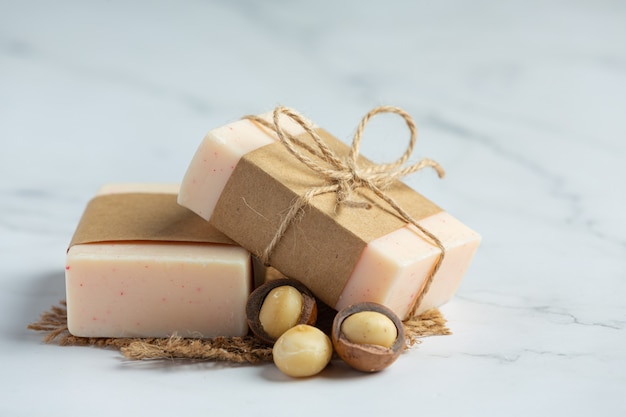Making your own soap can be a fulfilling and rewarding experience. Not only do you get to choose the ingredients, but you can also customize the scent and shape of your soap. In this article, we will explore the various methods of making soap and provide you with a step-by-step guide to making your own soap at home. So, let's dive in and learn more about "Metode dalam pembuatan sabun mandi" or methods of making soap.
 |
| https://img.freepik.com/free-photo/macadamia-soap-skin-care-treatment_1150-42789.jpg |
Understanding the Different Methods of Making Soap
Before you start making soap, it is important to understand the different methods of soap making. There are several methods of soap making, including cold process, hot process, and melt and pour.
Cold Process Method
The cold process method involves mixing oils and lye. The mixture is then left to cure for several weeks to allow the saponification process to occur. This method is great for making large batches of soap and allows for a lot of customization. However, it does require a longer curing time and can be more difficult for beginners.
Hot Process Method
The hot process method involves cooking the soap mixture in a crockpot or on the stove. This method speeds up the saponification process and results in a faster curing time. However, it can be more difficult to customize and requires more equipment than the cold process method.
Melt and Pour Method
The melt and pour method involves melting a pre-made soap base and adding your own ingredients, such as essential oils or herbs. This method is great for beginners and allows for a lot of creativity, but it does not allow for as much customization as the other methods.
___
Ingredients You Will Need
No matter which method you choose, there are certain ingredients you will need to make soap. These ingredients include:
- Lye (sodium hydroxide)
- Oils (such as olive oil, coconut oil, and palm oil)
- Water or other liquid (such as milk or tea)
- Essential oils or fragrance oils (for scent)
- Additives (such as herbs or exfoliants)
It is important to use caution when handling lye, as it can be dangerous if not handled properly. Be sure to wear gloves and eye protection when working with lye.
Step-by-Step Guide to Making Soap
Now that you understand the different methods of making soap and have gathered your ingredients, it's time to start making soap! Here is a step-by-step guide to making soap using the cold process method:
Measure out your oils and lye using a scale. Be sure to use a lye calculator to determine the correct amount of lye for your specific recipe.
Heat your oils in a pot on the stove until they reach a temperature of around 100-110°F.
In a separate container, mix your lye with water or another liquid. Be sure to add the lye to the liquid, not the other way around.
Once the lye mixture has cooled to around 100-110°F, slowly add it to the oils. Use a stick blender to mix the mixture until it reaches trace, which is when the mixture has thickened and resembles pudding.
Add your essential oils, fragrance oils, or other additives to the mixture and stir well.
Pour the mixture into a soap mold and cover with a towel or other insulating material.
Allow the soap to cure for several weeks, checking it periodically to ensure that it is hardening properly.
Once the soap has cured, remove it from the mold and cut it into bars. Allow the bars to cure for an additional week or two before using.
Conclusion
So, let's start with the cold process method, which is the most commonly used method for making soap. It's also one of the most time-consuming methods, but it's worth it! When making soap with the cold process method, you'll need lye, which is a caustic chemical that can be dangerous if not handled properly. So make sure you take all the necessary precautions, such as wearing protective gear and working in a well-ventilated area.
The cold process method involves mixing lye with a combination of oils and fats to create a chemical reaction known as saponification. This process takes some time and patience, but the end result is a beautiful bar of soap that is gentle on the skin and packed with natural goodness.
Moving on to the hot process method, this method involves using heat to speed up the saponification process. With the hot process method, you don't have to wait as long for the soap to cure, which is great if you're in a hurry. The hot process method also allows you to experiment with different textures and designs, making it a popular choice for soap makers.
Lastly, we have the melt and pour method, which is perfect for beginners who are just starting out in soap making. This method involves melting pre-made soap base and adding your own ingredients, such as fragrance oils, colors, and exfoliants. With the melt and pour method, you can create beautiful and unique soap creations without having to handle lye.
In conclusion, there are many methods of making soap, and each method has its own unique benefits. Whether you prefer the traditional cold process method, the versatile hot process method, or the beginner-friendly melt and pour method, there's a soap making method that's perfect for you. So, get creative and start making your own handmade soaps today!
.jpg)
.jpg=w74-h74-p-k-no-nu)

Silahkan beri komentarnya